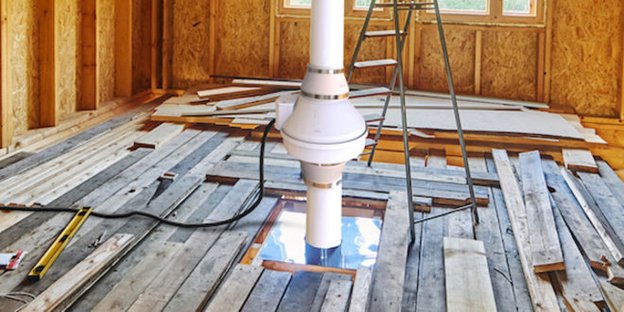
Radon, like thoron, penetrates into structures through holes in the foundation, floor and walls, sewer openings, water pipes from the earth’s crust. Due to the fact that these gases have no color,taste, and smell, and heavier than air, the concentrations of radon and thoron in the upper floors of multi-story buildings are usually lower than in the first and in the basement, and can only be detected by special devices.
In addition, radon enters houses along with the soil air, which is drawn from the soil due to the difference in pressure inside and outside the buildings. If the house does not have a special end-to-end hood that brings air out from under the floor through the roof to the outside, then rooms are an excellent trap for ground air saturated with radon and thoron. If the house stands on soil rich in radioactive elements, then the situation is especially unfavorable.
Additional sources of radon supply to housing are water and natural gas. There is not much of it in ordinary water, but in deep wells and artesian wells, it can be contained in high concentrations, a special danger in bathrooms, where its content is sometimes tens of times higher than in living quarters.
Underground radon also penetrates into natural gas, so its content in an apartment can increase noticeably if kitchen stoves and heating devices that burn natural gas are not equipped with an exhaust hood.
There are several advantages of installing the System in new constructions: